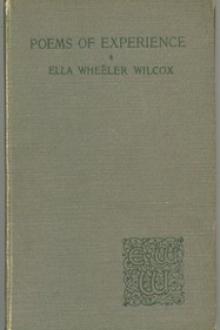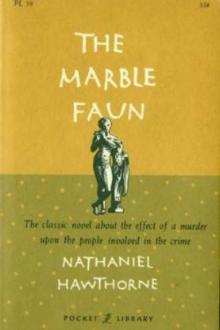The Iron Horse by R. M. Ballantyne (any book recommendations txt) 📖

- Author: R. M. Ballantyne
Book online «The Iron Horse by R. M. Ballantyne (any book recommendations txt) 📖». Author R. M. Ballantyne
From the time of the opening of the old Manchester and Liverpool Railway in 1830 to the present day—a period of little more than forty years—railway construction has gone forward throughout the land—and we may add the world—with truly railway speed, insomuch that England has become covered from end to end with an absolute network of iron roads, and the benefit to our country has been inconceivably great. It would require a large volume to treat of these and correlative subjects, as they deserve.
Two hundred years ago the course of post between London and Edinburgh was one month; before an answer could be received two months had to elapse! About a hundred years later there was one stage-coach between the two cities, which did the distance in a fortnight, rendering communication and reply possible once in each month. In those days roads were uncommonly bad. One writer tells us that, while travelling in Lancashire, a county now traversed by railways in all directions, he found one of the principal roads so bad that there were ruts in it, which he measured, four feet deep, and that the only mending it received was the tumbling of stones into these holes to fill them up. The extremely limited goods traffic of the country was conducted by the slow means of carts and waggons. Enterprising men, however, then as now, were pushing the world forward, though they were by no means so numerous then as now. In 1673 it took a week to travel between London and Exeter, and cost from forty to forty-five shillings. About the same period a six-horse coach took six days to perform the journey between Edinburgh and Glasgow and back. To accomplish fifty miles or thereabouts in two days with a six-horse stage-coach, was considered good work and high speed about the beginning of last century. Near the middle of it (1740) travelling by night was for the first time introduced, and soon after that a coach was started with a wicker-basket slung behind for outside passengers! Some years afterwards an enterprising individual started a “flying coach” drawn by eight horses, which travelled between London and Dover in a day—the fare being one guinea. Even at the beginning of the present century four miles an hour was deemed a very fair rate of travelling for a stage-coach.
With the improvement of roads by the famous Macadam in 1816, began improved travelling and increased speed. The process was rapid. Mail-coaches began to overrun the country in all directions at the then remarkable pace of from eight to ten miles an hour,—and, let us remark in passing, there was a whirl and dash about these stage-coaches which railway trains, with all their velocity can never hope to attain to, except when they dash into each other! Man is but a weak creature in some senses. Facts are scarcely facts to him unless they touch his eye or ear. The smooth run of a train at twenty or even thirty miles an hour, with its gradual start and gentle pull up, has but a slight effect on him now compared with the splendid swing of the well-appointed mail coach of old as it swept round the bend of a road, and, with red-coated driver and guard, cracking whip, flying dust and stones, and reeking foam-flecked horses, dashed into town and pulled up, while at nearly full speed, amid all the glorious crash and turmoil of arrival! No doubt the passing of an express train within a yard of your nose is something peculiarly awful, and if you ever get permission to ride on the engine of an express, the real truth regarding speed, weight, momentum, will make a profound impression on you, but in ordinary circumstances the arrival of a train cannot for a moment compare with the dash, the animal spirit, the enthusiasm, the romance of the mail coach of days gone by.
About the time that the day of slow speed was drawing to a close (1837) licenses were granted to 3026 stage-coaches, of which 1507 went to and from London, besides 103 mail-coaches. And it has been estimated that the number of passengers carried in the year about that time was two millions. In regard to the merchandise traffic of the kingdom, we cannot give statistics, but we ask the reader to bear in mind that it was all conducted by means of heavy waggons and slow-going canal barges.
Now, let us contrast this state of things with the condition and influence of railways up to the present time. As we have said, the iron horse began his career in 1830 on the Liverpool and Manchester line—long since become part of the London and North-Western Railway—at that time thirty-one miles long. Eight years later, Liverpool, Manchester, and Birmingham were completely connected with London by railway. Then, as success attended the scheme, new lines were undertaken and opened at a still more rapid rate until, in 1843—despite the depression caused for a time by over-speculating—there were nearly 2000 miles of railway open for traffic. In 1850 there were above 6000 miles open; in 1860, above 10,000. In 1864 the railways of the kingdom employed upwards of 7200 locomotives, 23,470 passenger carriages, and 212,900 goods and mineral waggons. In that one year about five million passengers and goods trains ran 130 millions of miles—a distance that would encircle the earth 5221 times—the earth being 24,896 miles in circumference. In 1866 the gross receipts of railways was about forty millions of pounds sterling. At the present date (1871) above 14,000 miles of railway are open in the United Kingdom. This mileage is divided amongst about 430 companies, but a considerable number of these have been incorporated with the larger companies, such as the London and North west, the Great Western, etcetera.
All the lines carried in one year (1870) somewhere about 307 millions of passengers—in other words, that number of passenger journeys were performed on them. The mail and stage-coaches in their best days only conveyed, as we have said, two millions! See note at end of chapter.
It is almost overwhelming to consider what a vast change in the condition and habits of the people of this country is implied in these figures. Forty years ago none travelled but the comparatively rich, and that only to an extent equal to about two-thirds of the present population of London. Now-a-days the poorest artisan can, and does, afford to travel, and the number of journeys performed each year on all our British railways is equal to more than the entire population of Europe! which, in Stewart’s “Modern Geography,” is set down at 285 millions. From this of course it follows, that as many thousands of men, women, and children never travel at all, many others must have undertaken numerous journeys in that year.
The facilities afforded by railways are altogether innumerable. If so disposed you may sup one night in the south of England and the next night in the north of Scotland. Thousands of families dwell in the country, while the heads thereof go to their business in town by rail every morning and return home every evening. Huntsmen, booted and spurred, are whirled off, horses and all, to distant fields, whence, after “crossing country” all day, they return to the railway and are whirled back to town in time for dinner. Navvys and artisans are conveyed to their work at a penny a mile, and monster-trains carry thousands of excursionists to scenes of rural delight that our fathers never dreamed of in their wildest flights of fancy.
One of the most remarkable and interesting facts in connexion with all this is, that although mail-coaches have been beaten off the field, there are actually more horses employed in this country now than there were in 1837, while canals are doing more business than they ever did, and are making higher profits too. In 1865 the carriage of cattle by railway amounted to between fourteen or fifteen million head of all kinds. The consumption of coal, in the same year, by our railways amounted to four million tons, and the quantity of that and other minerals carried by rail continually is enormous.
The benefit derived by the post-office also from our railways is incalculable. We cannot afford space to enter into details, but it may be truly said that but for railways the Post-Office Savings Bank system could not have existed; and of course, also, our frequent deliveries of letters and rapid as well as cheap communication with all parts of the kingdom would have been impossible. The railway service of the Post-Office is over 60,000 miles a day, and the gross sum paid by the Post-Office to railways in one year was 570,500 pounds.
These are but a few of the amazing statistics connected with our railway system, which, if fully enlarged upon, would fill a bulky volume. If our readers desire more there are several most interesting and instructive works on the subject, which are well worthy of perusal. See note 2 at the end of the chapter.
Before closing this perhaps too statistical chapter, we shall say a few words as to the construction of a railway. No one who has not looked pretty closely into the subject can form any adequate conception of the difficulties that beset an engineer-in-chief in the formation of a line of railway. We will suppose that all the Parliamentary battles have been fought, opposition overcome, the heavy expenses connected therewith paid, and the work begun.
The engineer has walked again and again over the country through which the railway is to be carried and selected the best route, his assistants having meanwhile taken for him “flying levels” and “cross levels.” Too frequently prejudice, ignorance, and selfishness interpose to prevent the best route being taken, and immense sums that might have been saved are spent in constructing the line on the next best route. As soon as the course of a line is fixed, accurate surveys are made by the assistant engineers, copies of which are placed, according to Act of Parliament, with the various clerks of the peace of the counties, through which the line is to pass, with the Commissioners of Railways and others, besides which there has to be prepared for each parish its proportion, and for each landholder a section showing the greatest depth of cutting or embankment in any of his fields.
As soon as all this has been done, and the Act of Parliament authorising the line obtained, an accurate plan and section of the whole line is made, from which the engineer ascertains and lays down its gradients, in other words its ascents and descents, determines the number and size of the bridges and viaducts to be made, calculates the quantity of embankments required to fill up hollows, and the number of cuttings to level obstructions, in which latter calculations he estimates that the cutting down of elevations will be made subservient as far as may be, to the elevation of depressions. All this involves very nice and exact calculation as to quantity of material, masonry, etcetera, and the sinking of “trial shafts” to ascertain the nature of the various strata to be excavated or tunnelled. Then the cost of all the works has to be estimated in detail, apportioned into lengths and advertised for execution by contract. To each section of the line thus apportioned—forty or fifty miles—an experienced engineer is appointed, having under him “sub-assistants,” who superintend from ten to fifteen miles each, and these again are assisted by “inspectors” of masonry, mining, earth-work and permanent way, to each of whom a district is assigned.
These managing and guiding men having been appointed, the physical workers are then called into action, in the form of bands of navvies. As the steam and mechanism of the locomotive are useless except in
 Have you ever thought about what fiction is? Probably, such a question may seem surprising: and so everything is clear. Every person throughout his life has to repeatedly create the works he needs for specific purposes - statements, autobiographies, dictations - using not gypsum or clay, not musical notes, not paints, but just a word. At the same time, almost every person will be very surprised if he is told that he thereby created a work of fiction, which is very different from visual art, music and sculpture making. However, everyone understands that a student's essay or dictation is fundamentally different from novels, short stories, news that are created by professional writers. In the works of professionals there is the most important difference - excogitation. But, oddly enough, in a school literature course, you don’t realize the full power of fiction. So using our website in your free time discover fiction for yourself.
Have you ever thought about what fiction is? Probably, such a question may seem surprising: and so everything is clear. Every person throughout his life has to repeatedly create the works he needs for specific purposes - statements, autobiographies, dictations - using not gypsum or clay, not musical notes, not paints, but just a word. At the same time, almost every person will be very surprised if he is told that he thereby created a work of fiction, which is very different from visual art, music and sculpture making. However, everyone understands that a student's essay or dictation is fundamentally different from novels, short stories, news that are created by professional writers. In the works of professionals there is the most important difference - excogitation. But, oddly enough, in a school literature course, you don’t realize the full power of fiction. So using our website in your free time discover fiction for yourself. 




Comments (0)